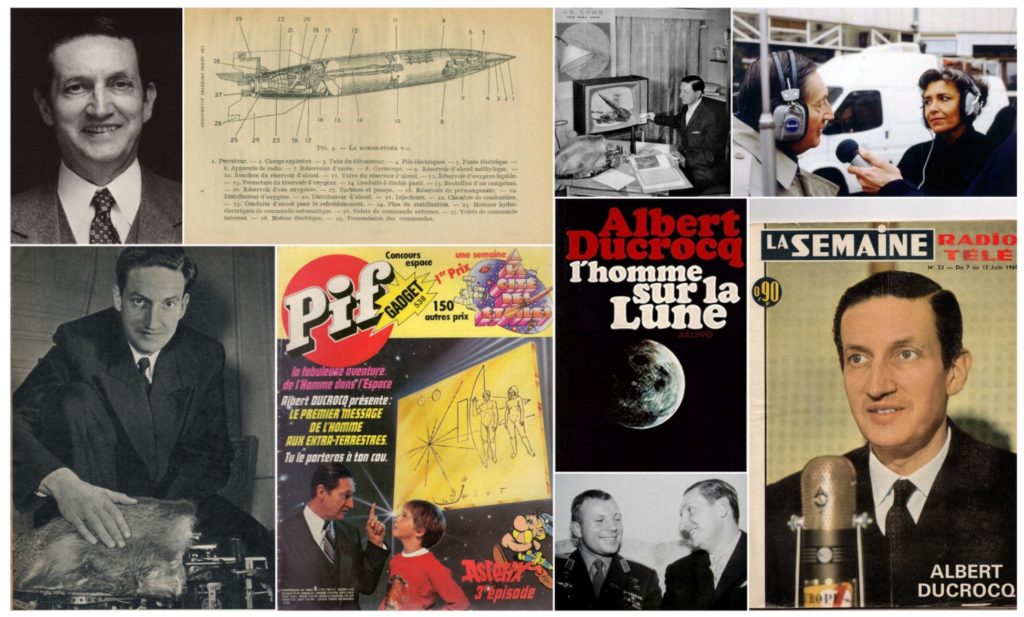Catégorie : Sciences
-

Rouge gorge quantique
Des effets quantiques associés à la décomposition, en présence de lumière, d’une molécule présente dans la rétine du volatile rendraient ce dernier sensible au champ magnétique. Et expliqueraient ses capacités à se repérer. Des résultats de laboratoire à confirmer.
Publié dans le Monde par David Larousserie le 27 juin 2021 (Ref: revue Nature du 24 juin)

Rouge-gorge (« Erithacus rubecula »), Le niveau monte chez les bêtes à plumes. Après les corneilles noires, au sens inné des nombres, les perroquets kéas, experts en raisonnements statistiques, ou les geais des chênes, impassibles face aux astuces des prestidigitateurs, voici les rouges-gorges familiers (Erithacus rubecula) maîtrisant la mécanique quantique. « Personne ne comprend la mécanique quantique », disait le Prix Nobel de physique Richard Feynman, à propos de cette théorie qui décrit la matière et ses interactions avec la lumière. C’est dire le génie du passereau.
Pour lui, cet art est vital. Il lui permet de ne pas perdre le nord lors de ses migrations nocturnes annuelles entre l’Europe du Nord et l’Afrique, en automne-hiver. Depuis des lustres, les chercheurs se volent dans les plumes sur cette question. Certains ont évoqué la présence de cristaux magnétiques dans les becs, sans les trouver. D’autres pensent aux repères visuels (Soleil, étoiles) mais, même aveugles, les oiseaux ne se perdent pas.
A partir de 1978, l’idée a émergé que des effets quantiques seraient à l’œuvre, rendant cet oiseau sensible au champ magnétique terrestre, mais peut-être aussi les pigeons et autres rousserolles effarvattes. Peu à peu, l’étau s’est resserré sur la famille des cryptochromes, des molécules présentes au fond des yeux, dont certains membres sont connus pour marquer le rythme de la journée.
Restait à confirmer que c’était la bonne boussole. Dans la revue Nature du 24 juin, une équipe multidisciplinaire, rassemblant des ornithologues, des chimistes, des physiciens, des biologistes, pense avoir réussi. Un des cryptochromes isolés chez le rouge-gorge, en présence de lumière, réagit à un champ magnétique. Mais pas celui d’un poulet domestique, incapable de s’orienter le long du champ terrestre. Voici comment. Accrochez-vous.
Un mécanisme complexe
Le cryptochrome reçoit un flash de lumière bleue, ce qui excite une des parties de la molécule, qui devient apte à recevoir un électron en provenance d’un autre morceau de la protéine. Le départ de cet électron crée un vide, comblé aussitôt par un autre électron, qui lui-même laisse un vide, etc. Quatre sauts ont lieu qui créent deux nouveaux cryptochromes avec des énergies légèrement différentes.
Quand tout redevient calme, une de ces molécules redonne le cryptochrome normal, tandis que l’autre se transforme en une nouvelle molécule, qui déclenche alors une cascade chimique qui finit, on ne sait pas encore comment, par réveiller les neurones qui guident l’oiseau. Et justement, un champ magnétique extérieur, comme le champ terrestre, modifie l’équilibre entre les deux formes du cryptochrome, permettant de corriger l’orientation du vol. Ouf, on y est…
Et tout est quantique là-dedans : les liaisons chimiques, l’excitation, le transfert (effet dit tunnel), le double état, le passage d’un état à l’autre… Bien sûr, dans un tel domaine controversé, les critiques ne manquent pas. Le champ magnétique utilisé est mille fois plus intense que le champ terrestre. L’expérience a lieu in vitro et pas in vivo. Les expériences ont été menées à la lumière alors que, sans lumière, les passereaux ne sont pas perdus…
« C’est la première fois qu’on montre l’influence d’un très faible champ magnétique sur une réaction chimique en biologie », indique Aurélien de la Lande, chercheur CNRS à l’université Paris-Saclay, un des évaluateurs de l’article. Ce n’est déjà pas si mal. Alors, le rouge-gorge utilise-t-il le champ magnétique ? Oui, non ? Les deux à la fois, sans doute. Quoi de plus quantique !
-

An Unexpected Role for the Brain’s Immune Cells

Katerina Akassoglou and her team discover that microglia cells constantly survey the brain to prevent spontaneous seizures. An important part of the brain’s immune system, cells called microglia constantly extend and retract “branches” from their cell body to survey their environment. Think of an octopus, not moving its body, but reaching its tentacles in every direction. That’s how microglia operate. In the span of an hour, each cell will have covered the entire three-dimensional space that surrounds it. And then, it will start all over again.This continuous and rapid surveillance is a unique feature reserved for microglial cells in the brain. It occurs in your brain all the time, without the presence of disease, and whether you are awake or asleep. Microglia can also rapidly direct their branches toward a site of injury in the brain. The longstanding theory has been that microglia perform this surveillance to sense invasion by an infectious agent or to sense trauma.
“This never made sense to me,” says Katerina Akassoglou, PhD, a senior investigator at Gladstone Institutes. “Why would a cell expend so much energy for something that might never happen? I always thought there must be another reason for microglia to be moving all the time, likely related to a normal function in the brain.”
As it turns out, Akassoglou was right.
In a recent study published in the journal Nature Neuroscience, she and her team show that, in fact, surveillance by microglia helps prevent seizure activity (or hyperexcitability) in the brain. These findings could open new therapeutic avenues for several diseases, given that hyperexcitability is a feature of many neurological disorders, including Alzheimer’s disease, epilepsy, and autism.
Preventing an Overactive Brain
Akassoglou has been interested in the brain’s innate immune system since the beginning of her scientific career. She first witnessed microglial surveillance under the microscope during her postdoctoral fellowship in 2003, in a neighboring lab that discovered the phenomenon. Right away, she knew that to understand these cells, she had to find a way to “freeze” their movement.
“That was easier said than done—it took over 10 years to figure out how to stop them from moving,” says Akassoglou, who is also a professor of neurology at UC San Francisco (UCSF). “There are ways to kill the cells, but then they are gone and you can’t study their movement. It was very challenging to find a way to keep them alive while also preventing them from being able to survey the brain.”
She and her team created the first mouse model in which the process of microglial brain surveillance can be blocked. The cells are still alive, but they can no longer extend and retract their branches. Then, the goal of the project was simply to observe what happens.
“It was purely driven by curiosity,” Akassoglou says. “We just wanted to know, why do these cells move all the time, and what happens to the brain if they stop?”
Initially, nothing seemed to happen and the “frozen” microglia appeared normal. Until one day, Victoria Rafalski unexpectedly observed a mouse having a seizure.
“That’s when we realized that with microglia not functioning properly, mice were having spontaneous seizures,” says Rafalski, PhD, a first author of the study and former postdoctoral scholar in Akassoglou’s lab at Gladstone. “It was our first indication that surveillance by these cells might suppress seizure activity. It also gave us a hint as to why they needed to move constantly—suppressing seizures may be a nonstop necessity in the brain.”
To investigate further, the researchers relied on the latest technological advances in microscopy and image analysis. They combined these approaches to develop their own method to observe the interaction between microglia and active neurons in a live brain, as mice ran on a wheel while their whiskers were tickled.
The scientists discovered that microglia are not extending their branches at random. Instead, microglia reach out primarily to active neurons, one after another, while paying less attention to non-active neurons. Importantly, they noticed that when microglia touch an active neuron, that neuron’s activity does not increase further.

In the new study, Akassoglou and her team show that microglia (yellow) extend their branches to touch nearby neurons (blue and green), preventing these neurons from becoming overly active and causing seizures. Video by Keun-Young Kim, Gladstone Institutes.
“Microglia seem to sense which neuron is about to become overly active, and keep it in check by making contact with it, which prevents that neuron’s activity from escalating,” explains the study’s other first author, Mario Merlini, former staff research scientist in Akassoglou’s lab, who now leads a team at the University of Caen Normandie in France. “In contrast, in our mouse model where microglia movements are frozen, we found that the activity of nearby neurons keeps increasing, a bit like a heater with a broken thermostat. This changed our thinking on how neuronal activity is regulated in the brain. Instead of an on-off switch, microglia are the brain’s thermostat, controlling excessive neuronal activity”.
These findings helped the team discover a physiological role for microglial surveillance; microglia are essential for maintaining neuronal activity within a normal range by preventing neurons from becoming overactive, or hyperexcitable.
“Network hyperexcitability can be observed in patients with epilepsy and in other conditions in which epilepsy is more likely to occur, such as Alzheimer’s disease and autism,” says Jorge Palop, PhD, a co-author of the study and associate investigator at Gladstone. “And, a hyperactive brain causes a large number of neurons to fire (or become active) at the same time—a process known as hypersynchrony that can lead to spontaneous seizures. Our study could offer a new way to intervene in diseases with hyperexcitability.”
“In many brain diseases, the ability of microglia to survey the brain is impaired,” says Akassoglou. “We now have a model to study the consequences of impaired microglia surveillance on brain inflammation and cognition in diseases including Alzheimer’s disease, multiple sclerosis, and also brain infection by viruses, like COVID-19.”
Knowing that microglia constantly move to keep the brain from becoming hyperexcitable could have therapeutic implications. In fact, hyperactivity in the brain could be reversed by using pharmacologic activators to force microglia to extend their branches. In the study, this approach restored the microglial processes when whiskers were tickled and brought neuronal activity back to normal levels. Akassoglou and her team are now expanding these studies to test any possible beneficial effects in models of disease.
“By unlocking the enigma of microglia’s constant movement, we now have new clues for treating devastating brain diseases,” says Akassoglou.
The paper, “Microglial Gi-dependent dynamics regulate brain network hyperexcitability,” was published online by Nature Neuroscience on December 14, 2020.
-

ISS transit over the Sun
The astrophotographer Mehmet Ergün has accomplished a remarkable and gloriously beautiful feat: after planning for two weeks, he travelled 300 kilometers by car to Einöd in Germany, a ten-hour journey, taking 35 Kg of equipment to take a photograph at a 1-second precise moment. It was for the International Space Station’s transit in front of the Sun on the 25th April 2021.
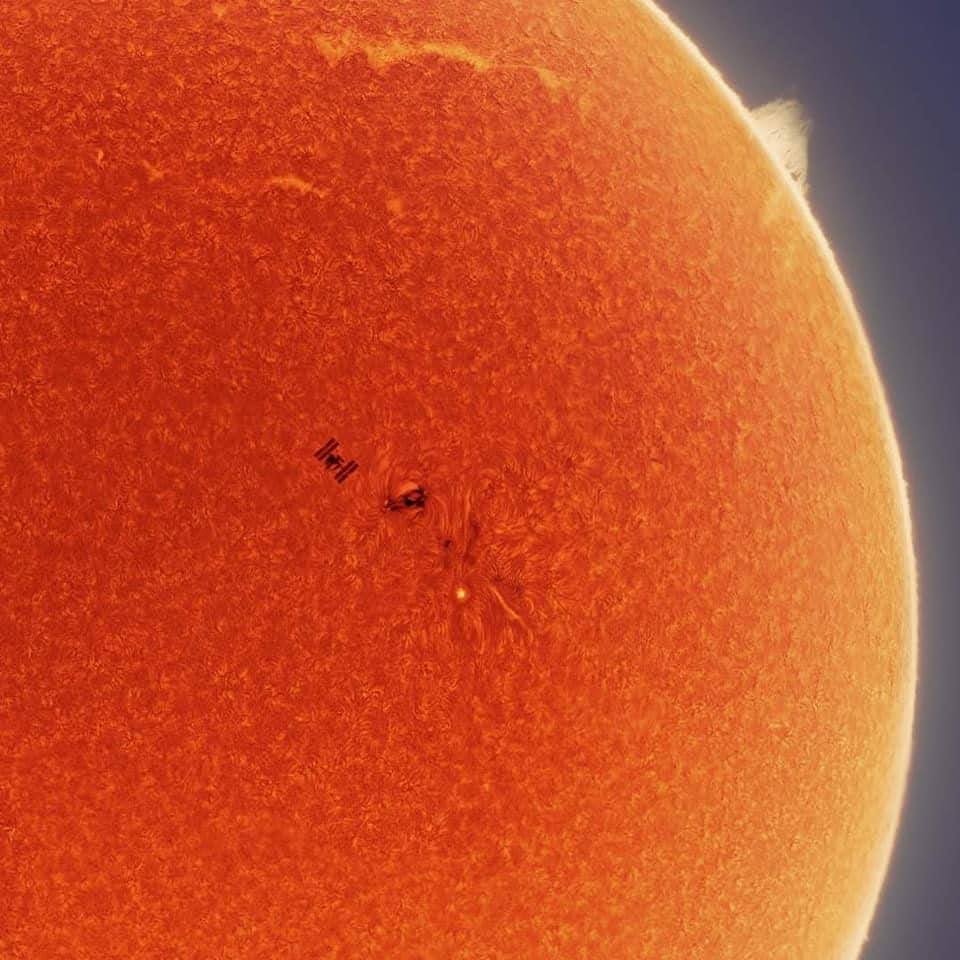



For the specialists, his equipment included :
DayStar Gemini, FlatCap
SharpStar 121SDQ
Rainbow RST-135
QHY174M
Baader D-ERF
TS 0,5 2″ Reducer
Hinode Solar Guider
… all Chinese to me !!
-
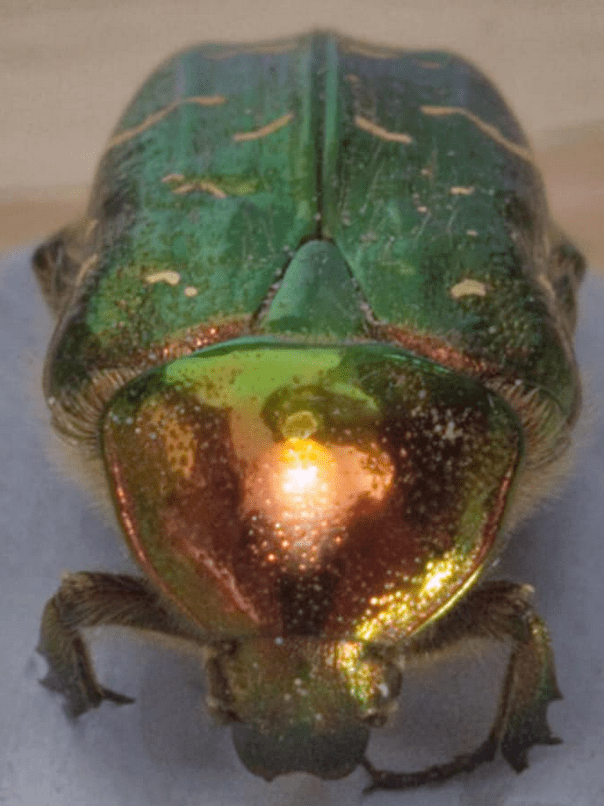
Reflets des étoiles et d’un scarabée

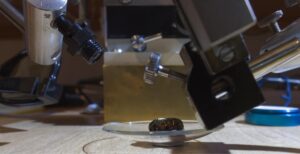
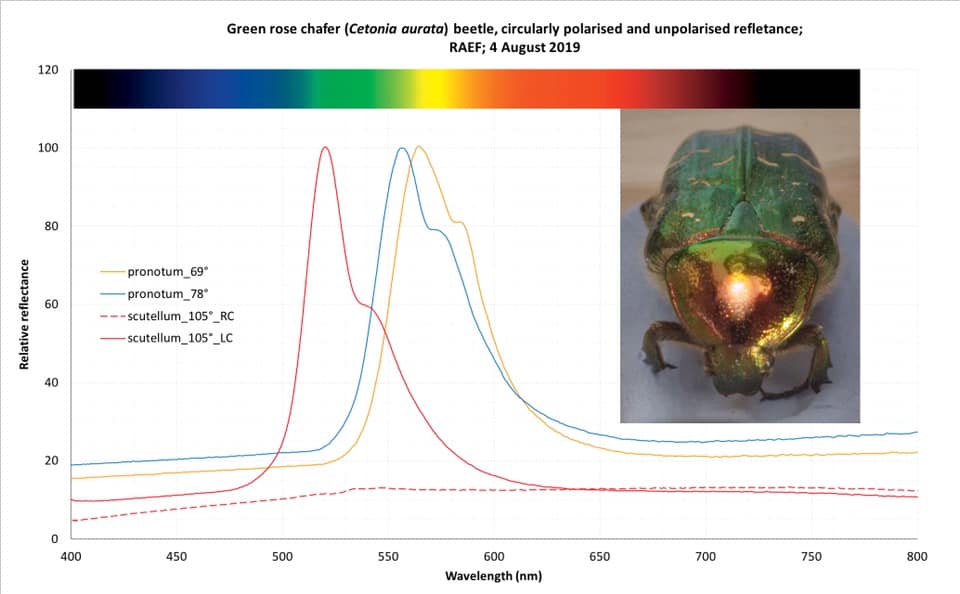
Une étude spectroscopique bien originale: celle des reflets de couleurs de la carapace d’un scarabée métallique (Cetonia aurata). Elle a été effectuée par Robert Fosbury, actuellement astronome émérite à l’Observatoire européen austral, et basé à Munich.
J’ai eu l’occasion de le rencontrer lors de mon travail pour l’Agence Spatiale Européenne.
Il est un passionné de photographie, d’analyse des phénomènes de radiations de toutes sortes de l’espace… et de la beauté de la nature à nos pieds.
La mise en œuvre de l’expérience parait complexe; Le spectre montre la réflectivité des deux couleurs dominantes du scarabée, un cuivré terni et d’un vert pure brillant.
La passion de Bob est jumeleé avec une rare modestie et gentillesse pour ceux qui découvrent l’astronomie. C’est cette alliance de qualités et d’intelligence que je trouve formidable. Trop rare. Merci Bob.
Source : ses pages « Bob Fosbury » sur Flickr.

